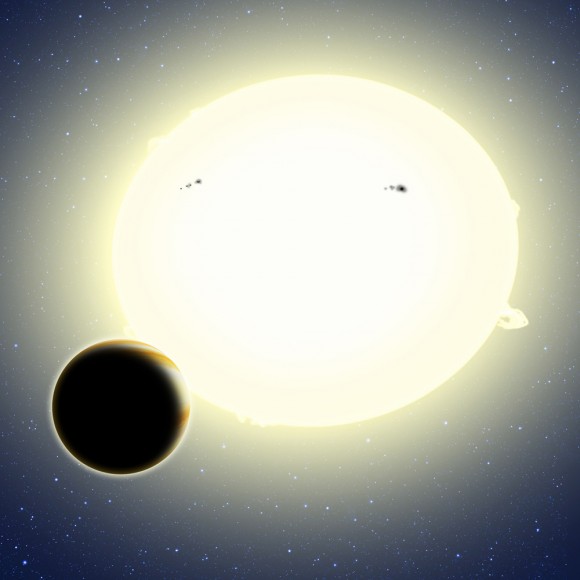

| Visitors Now: | |
| Total Visits: | |
| Total Stories: |

| Story Views | |
| Now: | |
| Last Hour: | |
| Last 24 Hours: | |
| Total: | |
Using the Theory of Relativity and BEER to Find Exoplanets

“Einstein’s planet,” formally known as Kepler-76b, is a “hot Jupiter” that orbits its star every 1.5 days. Its diameter is about 25 percent larger than Jupiter and it weighs twice as much. This artist’s conception shows Kepler-76b orbiting its host star, which has been tidally distorted into a slight football shape (exaggerated here for effect). The planet was detected using the BEER algorithm, which looked for brightness changes in the star as the planet orbits due to relativistic BEaming, Ellipsoidal variations, and Reflected light from the planet.
Credit: David A. Aguilar (CfA)
A new method of detecting alien worlds is full of awesome, as it combines Einstein’s Theory of Relativity along with BEER. No, not the weekend beverage of choice, but the relativistic BEaming, Ellipsoidal, and Reflection/emission modulations algorithm. This new way of finding exoplanets was developed by Professor Tsevi Mazeh and his student, Simchon Faigler, at Tel Aviv University, Israel, and it has been used for the first time to find a distant exoplanet, Kepler-76b, informally named Einstein’s planet.
“This is the first time that this aspect of Einstein’s theory of relativity has been used to discover a planet,” said Mazeh.
(…)
Read the rest of Using the Theory of Relativity and BEER to Find Exoplanets (548 words)
© nancy for Universe Today, 2013. |
Permalink |
No comment |
Post tags: exoplanets, Kepler Space Observatory
Feed enhanced by Better Feed from Ozh
Source: http://www.universetoday.com/102112/using-the-theory-of-relativity-and-beer-to-find-exoplanets/


